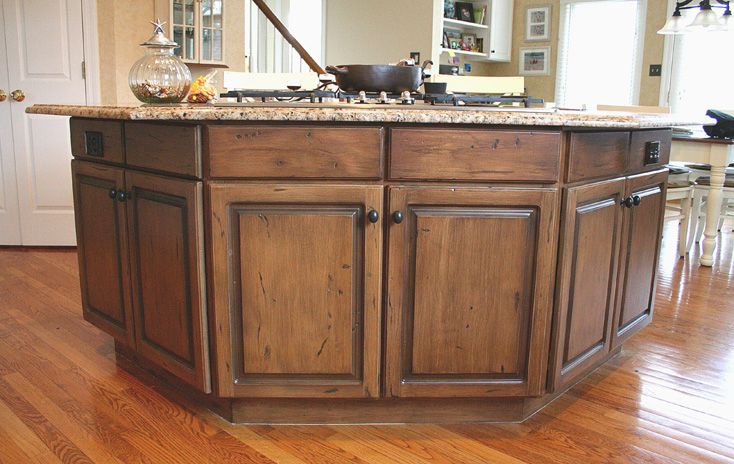Question
I have a customer who wants me to (significantly) darken the stain on his cabinetry. It looks as though the cabinetry has a medium-gloss lacquer on it now. Can I tint clear lacquer and apply it to the old finish? Or can I make a new stain out of dye and lacquer thinner and then apply a clear coat?
Forum Responses
(Finishing Forum)
From contributor P:
There are two common ways to add color to a completed finish. One is to use a glaze and the other is to use a toner (color in the finish). Proper prepping and glazing the entire surface will add a little color, but not much. A toner made with dye will add color and remain transparent. It's unusual to add a lot of color with a toner. I generally only count on the toner for a maximum of 25% of the final color. The other 75% or more comes from dye, stain, and/or glaze.
But that's not to say it can't be done. I made the sample below by spraying multiple coats of a "walnut" colored dye toner over maple. The far left is bare wood and the far right is 5 coats of toner.
Some things to consider before you take this route:
- Toner is unforgiving. You can't wipe off a mistake. If you get a run, sag, drip, stripes, solvent pop, or any other problem, there is no easy fix.
- It takes practice to spray toner into corners. Without making a conscious effort, the color will be lighter in the corners. The more coats you spray, the more obvious it will be.
- It takes good spray technique to avoid spraying stripes.
- You should thin the finish a lot so that each coat of toner only adds a very thin layer. Too many coats of finish will lead to premature failure (cracking), especially if it is pre- or post-catalyzed.
- The finish you use for the toner must be compatible with the existing finish. You need to know what the existing finish is before adding to it.
- It's a good idea to spray at least one coat of clear over the toner coat(s) to provide a wear layer.
Without seeing the cabinets and having a clear idea of the color the customer wants, I can't say if toning is the best approach or not. It would be an unusual case to find a situation where toning to add a significant amount of color would be my first choice.

Take a look at the picture below... These doors are thermafoil and previously had no grain at all. I sprayed on a base coat, brushed on a dark graining coat (toner) and then sprayed a transparent veiling coat (toner), applied a black antiquing glaze (to accent the distressing) and finished up with a clear coat for protection. To be truthful, the sprayer saves me time, but I am able to get the same or even superior quality with brushes alone (I know because on nearly every project, I actually do this on some parts which would be difficult to spray). As a matter of fact, the box edges and the toe kicks in the picture were done with brushes only.
